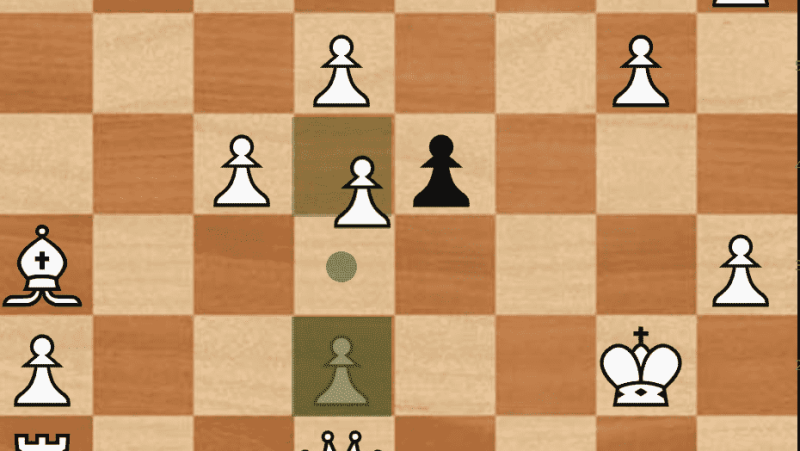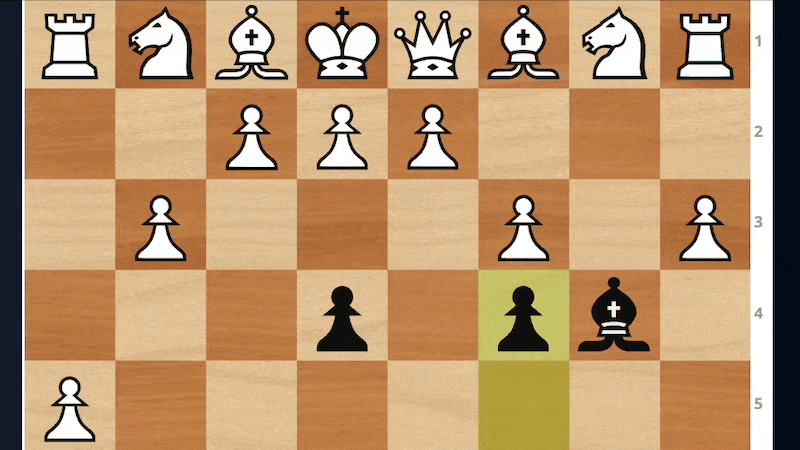Cos'è l'en passant negli scacchi?

Gli scacchi sono noti per la loro strategia e tattica che a volte possono renderli un gioco complicato. Se sei un principiante, potresti aver già imparato alcune delle tattiche più comuni, come bloccare i pezzi con l'alfiere o forchettare due pezzi con il cavallo.
Mentre molti giocatori hanno familiarità con le mosse comuni come l'arrocco o la promozione del pedone, en passant è molto più raro incontrarlo negli scacchi . Questa regola unica di cattura del pedone aggiunge un ulteriore livello di complessità al gioco e padroneggiarla può essere cruciale nel gioco di livello superiore. In questo blog, esploreremo cos'è en passant, quando usarlo e le sue origini storiche.
Cos'è l'En passant negli scacchi?
En passant, in francese "di passaggio", è una forma unica di cattura del pedone negli scacchi. Le sue condizioni sono molto specifiche. La regola entra in gioco quando un pedone si muove di due caselle in avanti dalla sua posizione di partenza, atterrando proprio accanto a un pedone avversario. In questa situazione, l'avversario ha la possibilità di catturare il pedone come se avessi mosso il tuo pedone solo di una casella in avanti.

Questa può essere una situazione complicata da capire, quindi facciamo un esempio (visto sopra)! Immagina che un pedone bianco si muova da d2 a d4. Se il Nero ha il pedone in c4, può catturare il pedone del Bianco muovendosi in diagonale sulla casella d3, anche se il pedone Bianco non si trova su quella casella.
Questa mossa è unica perché è l'unica forma di cattura negli scacchi in cui non si prende un pezzo andando nella casella in cui si trova il pezzo nemico. Sebbene sia un concetto strano, alla fine ci si abituerà. È importante specificare che la cattura deve avvenire immediatamente alla mossa successiva, altrimenti l'opportunità è persa.
Sebbene en passant possa sembrare a prima vista una regola strana, è stata concepita per impedire ai pedoni di usare l'avanzata di due caselle per evitare di essere catturati e di compromettere l'equilibrio del gioco. È una parte piccola ma essenziale per garantire l'equità e mantenere la profondità strategica della struttura pedonale negli scacchi.
Quando usare en passant
Usare en passant non è solo una strana stranezza che dovresti cercare di usare in ogni occasione. C'è un uso reale per questo. Tuttavia, sapere quando usare questa regola non è sempre ovvio. Abbiamo alcuni consigli generali su quando usarla, ma dovrai usare la tua consapevolezza situazionale per prendere la decisione corretta.
Controllo del centro
Uno dei motivi principali per cui si usa la regola en passant è impedire all'avversario di ottenere troppo controllo del centro con il suo pedone. Ricorda, una delle strategie più importanti negli scacchi è ottenere il controllo del centro. Se il tuo avversario sta cercando di spingere il suo pedone proprio oltre te, allora usare la mossa en passant può essere molto utile.
Come mettere alla prova il tuo avversario
Naturalmente, l'aspetto psicologico dell'en passant è una componente reale. A volte gli avversari saranno spiazzati dalla tua decisione, soprattutto se sono giocatori alle prime armi che non conoscono la regola. Tuttavia, sarà meno efficace contro i veterani del gioco che conoscono già bene la regola.
Origini dell'en passant
Le origini dell'en passant risalgono all'evoluzione degli scacchi in Europa tra il XIV e il XV secolo. In questo periodo, ai giocatori fu concesso di spingere i loro pedoni verso l'alto di due caselle alla volta se non si erano ancora mossi. Ciò rese il gioco più veloce e dinamico.
Detto questo, c'era un problema: le pedine ora erano in grado di aggirare le pedine nemiche che avrebbero potuto catturarle. Ciò significa che scambi importanti potevano essere evitati del tutto semplicemente avanzando di due caselle.
La regola en passant consentiva ai giocatori di continuare ad avere questi conflitti di pedoni, anche se un pedone poteva saltare l'altro spostandosi di due caselle. Questa è una dimostrazione di come anche uno dei giochi più antichi abbia spazio per crescere e migliorare se stesso.
Quindi, ora che hai imparato cos'è l'en passant, assicurati di cercare modi per usarlo nella tua prossima partita a scacchi. Niente più salti oltre i pedoni, è tempo di arrivare a un vero conflitto e pandemonio pedone contro pedone.